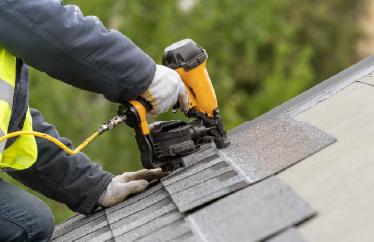When it comes to safety, your neighborhood crime rate shouldn’t be your only concern. Depending on where you live, you may find yourself in the path of a flood, hurricane, earthquake or tornado.
Before you purchase a home, it’s important to check and see whether it’s in a region prone to natural disasters. Find out which places would leave you most vulnerable to a bad storm and proceed with caution if you’ve considered settling down in one of these areas.
Flooding
Large-scale coastal flooding typically occurs once every 100 years. But it’s expected to happen 40 times more frequently, on average, by 2050.CLICK TO TWEET
Large-scale coastal flooding typically occurs once every 100 years. But it’s expected to happen 40 times more frequently, on average, by 2050. As global temperatures and sea levels rise, flooding will likely overwhelm many cities and make protecting infrastructure challenging. South Florida and New York are two examples of high-risk flood areas.
Many places in South Florida, including parts of Miami-Dade and Collier counties, are considered high-risk flood zones. But thousands of residents who need flood insurance don’t have it. According to an analysis from CoreLogic, losses from Hurricane Irma — which significantly damaged South Florida — could cost between $42.5 billion and $65 billion.
Between 2030 and 2045, New York City could experience a major flood every five years, according to a study published in the Proceedings of the National Academy of Sciences. Waves are more than 20 times more likely to threaten the city’s seawall than they were more than a century ago.
Tornadoes
More common in the United States than in any other country, tornadoes touch down more than 1,000 times annually. Most of them occur in the Great Plains region, where cold, dry air often collides with moist air from the Gulf Coast (the region most prone to thunderstorms). The Great Plains are part of Tornado Alley, an area generally stretching from the eastern portion of South Dakota down to central Texas.
Which areas have experienced the worst tornado damage? Weld, a Colorado county north of Denver, gets hit by four tornadoes each year, on average. Central Oklahoma, however, is considered the heart of Tornado Alley. A dozen tornadoes have struck a small town called Moore, Oklahoma since 1950.
Hurricanes
In 2017, hurricanes took center stage in the U.S. September was the most active month in history for hurricanes forming in the Atlantic Ocean. Damages from Hurricanes Harvey, Irma, Jose and Maria could cost as much as $200 billion.
In 2017, hurricanes took center stage in the U.S. September was the most active month in history for hurricanes forming in the Atlantic Ocean. Damages from Hurricanes Harvey, Irma, Jose and Maria could cost as much as $200 billion.CLICK TO TWEET
Miami and Key West, Florida are two U.S. cities with a high chance of being hit by a hurricane. On average, a hurricane approaches the areas surrounding Miami every six to eight years. Hurricane Andrew barreled through Miami in 1992, killing 65 people. Hurricane Irma did far less damage in the Magic City.
Key West is the southernmost point in the U.S. mainland. Storms also threaten this region, which like Miami has a 16% chance of being affected by a hurricane every year.
Wildfires
This year, wildfires managed to scorch thousands of acres on the West Coast, resulting in damages that could cost as much as $6 billion. Wine country in the rolling hills of Napa and Sonoma counties was left defenseless in the face of fast-moving fires, low humidity and high winds.
Nationwide, more than 8 million acres have burned in 2017, up from 5.1 million acres a year earlier. According to the National Interagency Fire Center, we’ve lost more land to fires this year than we have within the past decade.
Earthquakes
Earthquakes pose a serious threat, particularly to cities in California. According to a recent survey, the Sunshine State is poised to experience a major earthquake at some point within the next 30 years. With hundreds of fault lines, the state is an earthquake hot zone.
The southern part of the infamous San Andreas Fault could become the future site of a giant earthquake. The last one happened there in 1857, indicating that another natural disaster could be on the horizon.
Other parts of the West Coast are also vulnerable to earthquakes. For example, northern Oregon could experience a big one within the next five decades.
Protect your home before disaster strikes
If you suddenly lost your home in a natural disaster, chances are you wouldn’t have enough coverage to replace everything. Bottom line: If you’re buying a house in an area that could be devastated by a weather-related event, you’ll need to understand what’s at stake, plan ahead and do what’s necessary to protect your assets.
If you’re buying a house in an area that could be devastated by a weather-related event, you’ll need to understand what’s at stake, plan ahead and do what’s necessary to protect your assets.CLICK TO TWEET
If you live in a region prone to flooding, for example, purchase a policy through the National Flood Insurance Program. Coverage for wind damage is generally offered through a standard homeowners insurance policy. But in parts of Texas and Florida where high winds can be destructive, you may need a separate policy.
Fire damage is generally covered by a standard homeowners insurance policy, but the extent of that coverage can vary. If you’re interested in earthquake coverage, you’ll need a free-standing policy since it won’t be covered under your homeowners insurance.
Have any questions about what type of coverage you need for your home? Speak with a Hippo Specialist, we’re here to help.




